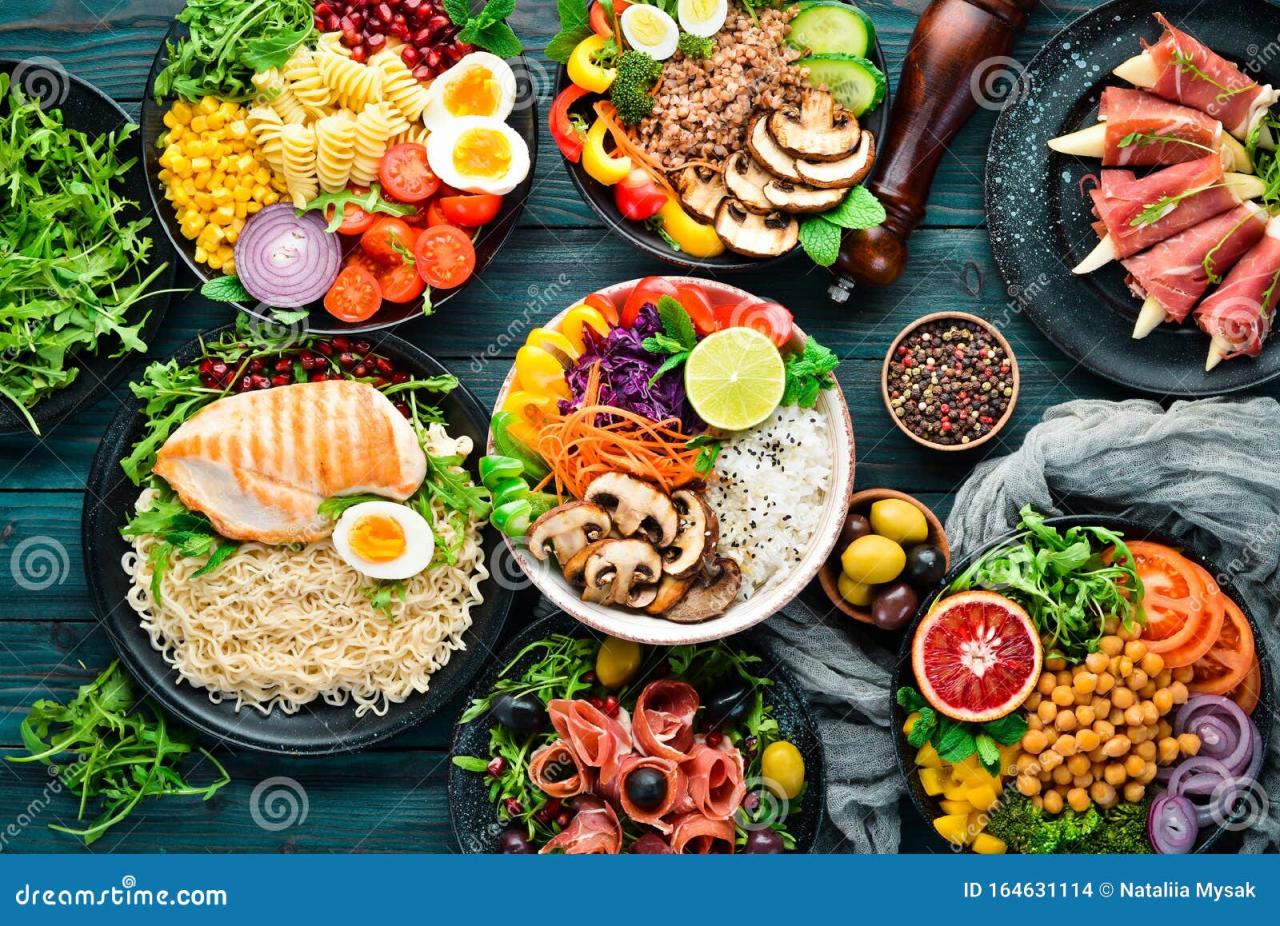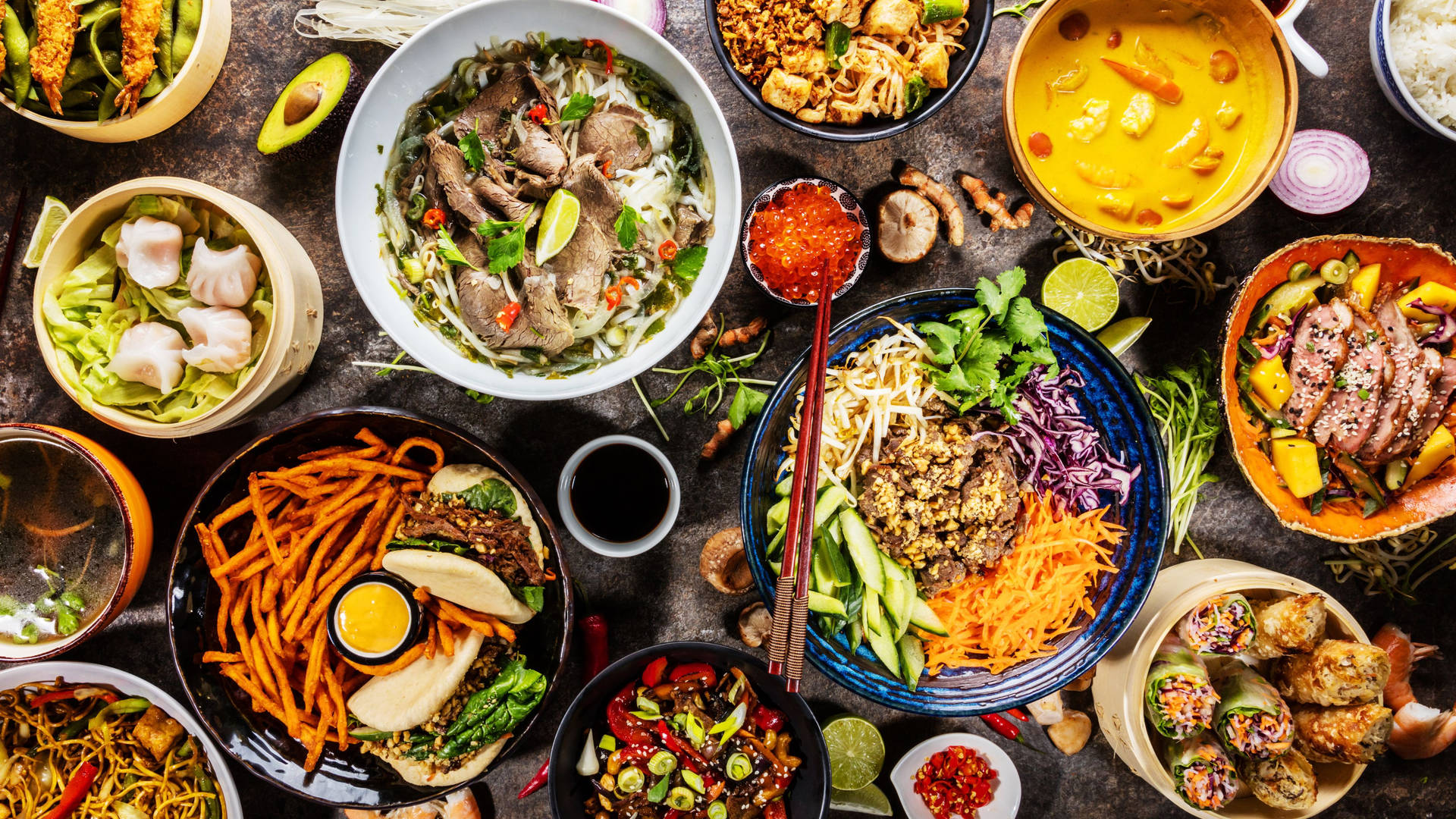The global food industry is a colossal, ever-evolving ecosystem, a fascinating blend of ancient traditions and cutting-edge innovation. It feeds billions, drives economies, and profoundly impacts public health and the environment. In such a complex and fast-paced environment, staying informed is not merely advantageous; it is absolutely critical for survival and success. This is where a dedicated food industry news magazine, like our hypothetical "Food Industry Insight," becomes an indispensable compass, guiding stakeholders through the intricate currents of market trends, technological breakthroughs, regulatory shifts, and consumer demands.
This article explores the multifaceted role, target audience, key content areas, and profound impact of such a publication, aiming to paint a comprehensive picture of its significance in shaping the future of food.
The Evolving Landscape of Food: A Constant State of Flux
Before delving into the specifics of a news magazine, it’s crucial to understand the landscape it seeks to illuminate. The food industry today is characterized by several overarching forces:
- Consumer Empowerment: Driven by digital access and social consciousness, consumers demand transparency, sustainability, health-conscious options, and personalized experiences.
- Technological Revolution: From AI in supply chain management to cellular agriculture and advanced food processing, technology is reshaping every facet of the industry.
- Sustainability Imperative: Environmental concerns, climate change, and resource scarcity are pushing companies towards more ethical sourcing, waste reduction, and circular economy models.
- Global Interconnectedness: Supply chains span continents, trade policies fluctuate, and global events have immediate ripple effects on food security and pricing.
- Regulatory Complexity: Food safety, labeling, and import/export regulations are constantly being updated, requiring vigilance and adaptability from businesses.
Navigating these powerful currents requires more than just daily headlines; it demands deep analysis, forward-looking insights, and a holistic understanding of interdependencies.
Defining the Mission: More Than Just News
A premier food industry news magazine like "Food Industry Insight" transcends the simple reporting of events. Its mission is multi-layered:
- Inform: To provide accurate, timely, and relevant information on critical industry developments.
- Analyze: To offer in-depth analysis and expert commentary, helping readers understand the ‘why’ behind the ‘what’ and predict future implications.
- Inspire: To showcase innovation, best practices, and success stories that motivate progress and problem-solving.
- Connect: To foster a sense of community among industry professionals, facilitating knowledge exchange and collaboration.
- Educate: To demystify complex topics, making cutting-edge research and policy changes accessible to a broad audience.
It serves as a curated knowledge hub, filtering the noise to deliver actionable intelligence.
Target Audience: Who Benefits from "Food Industry Insight"?
The readership of a comprehensive food industry news magazine is as diverse as the industry itself, encompassing a wide array of professionals who rely on its insights for strategic decision-making:
- C-Suite Executives (CEOs, CTOs, CMOs): They need high-level strategic overviews, market trend analyses, competitive intelligence, and financial news to steer their companies effectively.
- Research & Development (R&D) Professionals and Food Scientists: They seek information on novel ingredients, processing technologies, nutritional science, and emerging food safety challenges to drive product innovation.
- Supply Chain and Operations Managers: Crucial for them are articles on logistics, automation, traceability, risk management, and sustainable sourcing to optimize efficiency and resilience.
- Marketing and Brand Managers: They depend on insights into consumer behavior, demographic shifts, digital marketing strategies, and successful branding campaigns to connect with target audiences.
- Quality Assurance and Regulatory Affairs Specialists: They require detailed updates on food safety standards, labeling laws, compliance issues, and international regulations to ensure product integrity and legality.
- Investors and Financial Analysts: They look for economic forecasts, merger and acquisition (M&A) news, startup funding rounds, and company performance analyses to make informed investment decisions.
- Entrepreneurs and Startups: They gain invaluable knowledge on market gaps, funding opportunities, regulatory hurdles, and scalable business models.
- Academics and Researchers: The magazine provides a bridge between academic findings and practical industry applications, highlighting areas for further study and collaboration.
- Policymakers and Government Agencies: They can leverage industry insights to understand the impact of existing policies and inform the development of future regulations.
- Consultants: They use the magazine’s extensive content to stay abreast of client needs, industry benchmarks, and emerging solutions.
Essentially, anyone whose professional trajectory is intertwined with the food industry finds value in its pages.
The Breadth of Coverage: A Deep Dive into Key Sections
The true strength of "Food Industry Insight" lies in its comprehensive and meticulously curated content. Each issue is a tapestry woven from diverse threads of industry knowledge, typically organized into recurring sections:
1. Market Trends & Consumer Insights
This cornerstone section deciphers the ever-shifting landscape of consumer preferences. Articles here might cover:
- Plant-Based Revolution: Analysis of growth, new product launches, ingredient innovations, and market penetration of plant-based foods and beverages.
- Health & Wellness: Deep dives into functional foods, personalized nutrition, low-sugar/low-carb trends, and the science behind ‘superfoods’.
- Convenience & Snacking: The rise of ready-to-eat meals, portion control, and on-the-go solutions driven by busy lifestyles.
- Sustainability & Ethical Consumption: Consumer demand for ethically sourced ingredients, minimal packaging, and brands with strong environmental, social, and governance (ESG) commitments.
- E-commerce & Digital Transformation: How online grocery, direct-to-consumer (DTC) models, and food delivery services are reshaping retail.
2. Technology & Innovation
The food industry is a hotbed of technological advancement. This section explores:
- Food Tech Startups: Spotlights on innovative companies leveraging AI, robotics, IoT, and biotech to solve industry challenges.
- Precision Fermentation & Cellular Agriculture: The science and commercialization of lab-grown meats, dairy, and other novel proteins.
- AI & Big Data: Applications in supply chain optimization, demand forecasting, personalized nutrition, and food safety monitoring.
- Automation & Robotics: How automation is improving efficiency, safety, and addressing labor shortages in processing plants and kitchens.
- Packaging Innovations: Biodegradable materials, smart packaging for freshness monitoring, and designs that enhance consumer experience and reduce waste.
3. Supply Chain & Logistics
Given global interconnectedness, supply chain resilience is paramount. This section covers:
- Traceability & Blockchain: Technologies enabling farm-to-fork transparency, ensuring food safety and combating fraud.
- Cold Chain Management: Innovations in temperature-controlled logistics for perishable goods, reducing spoilage and extending shelf life.
- Resilience & Risk Mitigation: Strategies for navigating geopolitical disruptions, climate change impacts, and unforeseen crises.
- Sustainable Sourcing: Ethical labor practices, regenerative agriculture, and reducing the environmental footprint of ingredient procurement.
- Last-Mile Delivery: Challenges and solutions in urban logistics, cold storage at distribution centers, and timely delivery to consumers.
4. Food Safety & Regulation
A critical area, ensuring public health and compliance. Articles here focus on:
- Global Food Safety Standards: Updates on HACCP, GFSI, and other international benchmarks.
- Allergen Management: Best practices for preventing cross-contamination and clear labeling requirements.
- Emerging Pathogens & Contaminants: Research on new threats and strategies for detection and control.
- Regulatory Updates: Analysis of new laws and policies from bodies like the FDA, EFSA, and regional authorities.
- Crisis Management: Case studies and expert advice on handling recalls, outbreaks, and public relations during food safety incidents.
5. Sustainability & ESG
This section addresses the industry’s profound responsibility towards the planet and society:
- Carbon Footprint Reduction: Strategies for energy efficiency, renewable energy adoption, and reducing emissions across the value chain.
- Food Waste Solutions: Innovations in upcycling, donation programs, and technologies to minimize waste from farm to consumer.
- Water Stewardship: Best practices for water conservation and responsible usage in agricultural and processing operations.
- Circular Economy Models: Designing products and processes to eliminate waste and pollution, keeping products and materials in use.
- Ethical Sourcing & Labor Practices: Ensuring fair wages, safe working conditions, and responsible sourcing of ingredients.
6. Business, Finance & M&A
The economic pulse of the industry:
- Mergers & Acquisitions: Analysis of major deals, their strategic implications, and market consolidation trends.
- Investment & Funding Rounds: Highlighting successful startups, venture capital trends, and private equity activity in food tech.
- Economic Outlook: Forecasts and analyses of global and regional economic factors impacting food prices, consumer spending, and supply.
- Company Profiles & Executive Interviews: In-depth features on successful companies and insights from industry leaders on strategy, challenges, and future visions.
7. Marketing & Consumer Engagement
How brands connect with their audience:
- Digital Marketing Strategies: Social media trends, influencer marketing, content creation, and e-commerce optimization.
- Brand Storytelling: How companies build authentic narratives around their products, values, and origins.
- Personalization: Leveraging data to offer tailored products and marketing messages.
- Packaging Design: The role of aesthetics, functionality, and sustainability in attracting consumers.
8. Research & Development / Product Development
The engine of innovation:
- Ingredient Science: New functionalities of proteins, fibers, sweeteners, and flavor compounds.
- Nutritional Advancements: The latest research on diet, health, and disease prevention.
- Flavor Trends: Emerging taste profiles, regional influences, and natural flavor enhancements.
- Formulation Challenges: Overcoming hurdles in creating healthier, tastier, and more sustainable products.
9. Workforce & Talent
Addressing the human element:
- Labor Shortages & Automation: How the industry is adapting to workforce challenges.
- Diversity, Equity & Inclusion: Initiatives to build a more inclusive industry.
- Training & Skill Development: Preparing the workforce for new technologies and demands.
10. Global Perspectives
Understanding the international dimension:
- Regional Reports: Focus on specific markets, their unique challenges, and growth opportunities.
- International Trade Policies: Impact of tariffs, trade agreements, and geopolitical events on food exports and imports.
- Cultural Influences: How global cuisines and dietary habits are shaping product development and market expansion.
The Impact and Value Proposition
The cumulative effect of such comprehensive coverage makes "Food Industry Insight" an invaluable asset. It empowers its readers to:
- Make Informed Decisions: Strategic planning, product development, and investment choices are grounded in solid data and expert analysis.
- Maintain a Competitive Edge: By staying ahead of trends and technological shifts, businesses can innovate faster and adapt more effectively.
- Mitigate Risks: Early warnings about regulatory changes, supply chain vulnerabilities, or food safety threats allow for proactive measures.
- Foster Innovation: Exposure to groundbreaking research and successful case studies inspires new ideas and solutions.
- Build Networks: Features on industry events, thought leaders, and company profiles facilitate connections and partnerships.
- Ensure Compliance: Regular updates on regulations help businesses navigate complex legal landscapes, avoiding costly penalties.
Challenges and the Future of Food Industry Journalism
Even as it serves a vital role, a food industry news magazine must continuously evolve. The digital age brings both opportunities and challenges:
- Real-Time Information: The demand for instant updates necessitates a strong online presence, including daily news feeds, newsletters, and social media engagement.
- Data-Driven Insights: Leveraging data analytics to personalize content and provide even deeper, predictive insights.
- Multimedia Content: Integrating videos, podcasts, interactive infographics, and webinars to cater to diverse learning preferences.
- Global Reach: Expanding coverage to capture insights from rapidly growing emerging markets and provide truly international perspectives.
- Community Building: Creating online forums, virtual events, and exclusive content for subscribers to foster a stronger professional community.
The future of "Food Industry Insight" likely involves a hybrid model: a premium print magazine for deep dives and strategic reflection, complemented by a dynamic digital platform for real-time news, interactive content, and community engagement.
Conclusion
The food industry is a dynamic, complex, and profoundly significant sector that touches every aspect of human life. In this intricate landscape, a dedicated news magazine like "Food Industry Insight" is not just a source of information; it is a critical enabler of progress, a beacon of knowledge, and a catalyst for innovation. By meticulously curating and analyzing the torrent of global developments, it equips professionals with the intelligence needed to navigate challenges, seize opportunities, and ultimately, help shape a more sustainable, healthier, and more delicious future for all. It remains, truly, the indispensable compass for anyone charting a course in the world of food.

